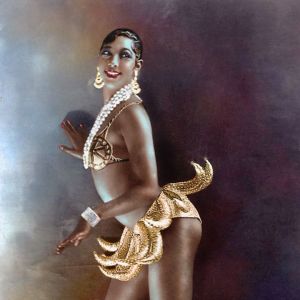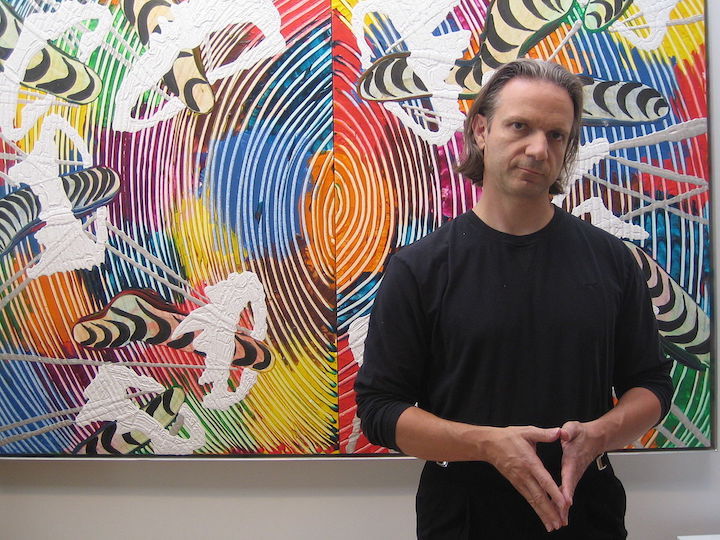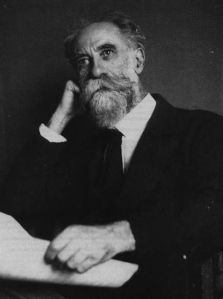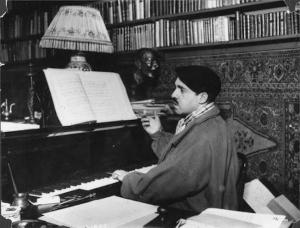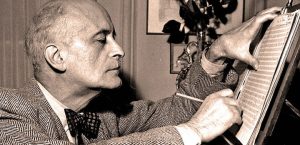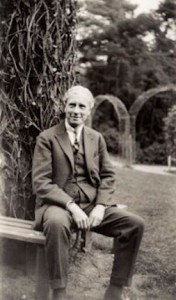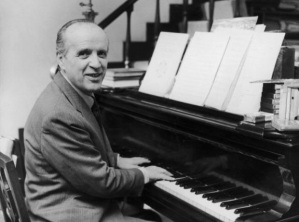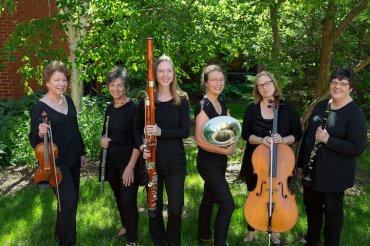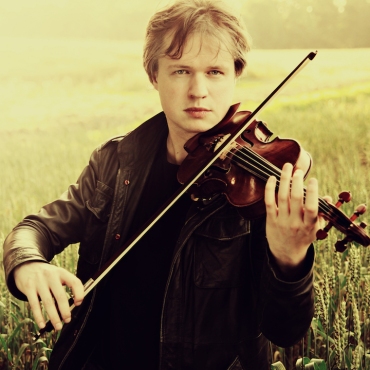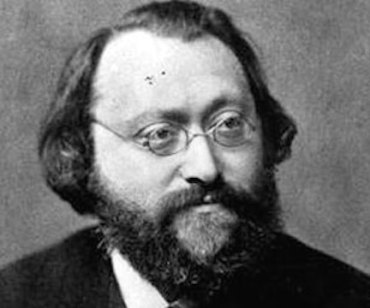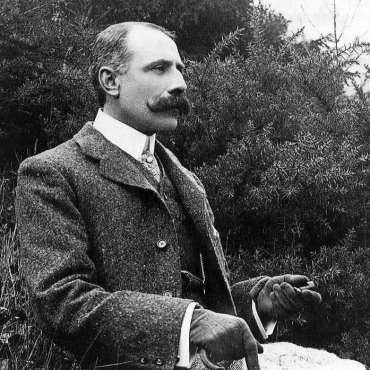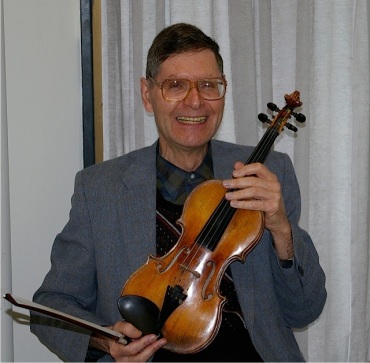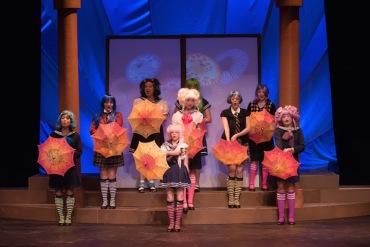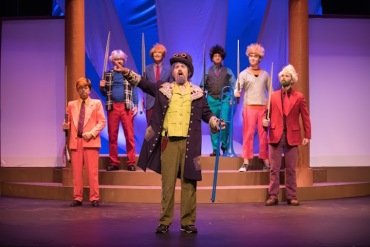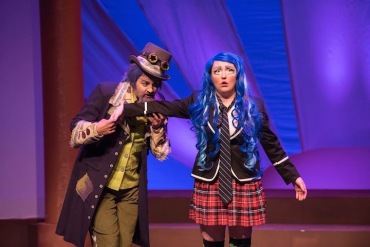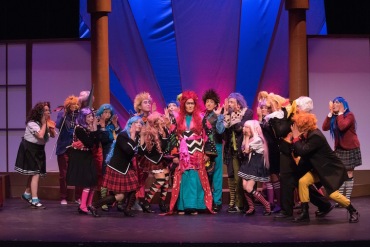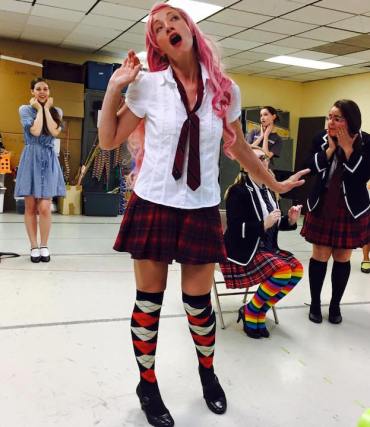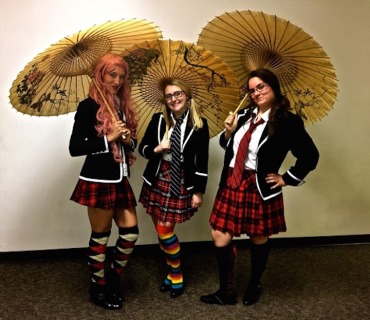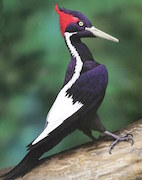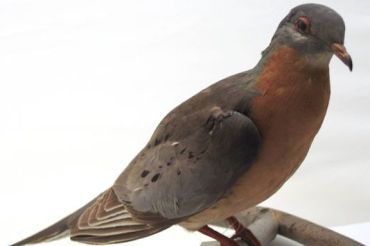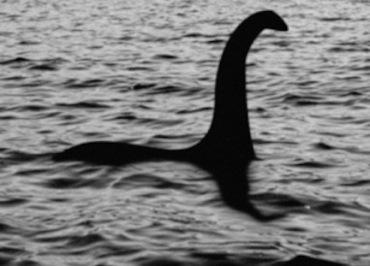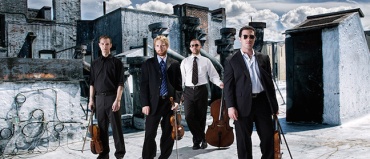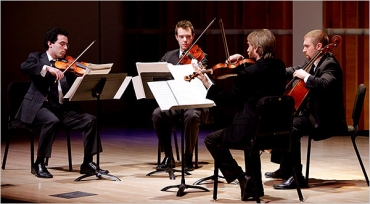The Well-Tempered Ear
Classical music: The Oakwood Chamber Players and guest artists give two performances of a holiday program this coming Sunday afternoon
Leave a Comment
By Jacob Stockinger
The Oakwood Chamber Players (below) continue their 2017-2018 season series “Journey” with a concert titled Quest on this coming Sunday, Nov. 26, at 1 p.m. and 3:30 p.m.
Both concerts will be held at the Oakwood Center for Arts and Education, 6209 Mineral Point Road, on Madison’s far west side near West Towne Mall.
Tickets can be purchased with cash or personal checks at the door: $25 for general admission, $20 for seniors and $5 for students. Visit www.oakwoodchamberplayers.com for more information.
At the heart of this holiday-themed concert is British composer John Rutter (below) and his imaginative story about the origins of the holiday favorite In dulci jubilo.
Believed to have been sung by angels as an inspired gift to a medieval monk, the musical fable traces how life’s distractions can sometimes interfere with sublime gifts.
The quest for the carol’s completion is told with heart-warming humor.
Narrator Buzz Kemper (below) will bring the whimsical story’s characters to life along with instrumentalists and a vocal quartet.
Canadian-Slovenian composer Marjan Mozetich (below) characterizes his music as that which explores the spiritual by showing introspective and meditative qualities. Written for harp, flute, clarinet and string quartet his evocative Angels in Flight is poignant and layered with a shimmering melodic framework.
The animated short of Raymond Brigg’s children’s story The Snowman was set to music by British film composer Howard Blake (below). A string quartet arrangement of his uplifting music for the film highlights the memorable moments. The suite includes the delightful “Walking in the Air” capturing the moment when imagination brings the snowman to life and it flies a young boy toward the North Pole.
The program will also include Ralph Vaughan Williams’ March Past of the Kitchen Utensils (heard in the YouTube video at the bottom) and George Shearing’s jazzy arrangement of Blow, Blow Thou Winter Wind. UW-trained composer and pianist Scott Gendel (below) wrote a Christmas piece — It Was My Father’s Custom — in 2011, and it will be presented by the ensemble and singers.
Guest vocalists are: Mari Borowski, Lauren Gruber, Robert Goderich and Jace Nichols.
Guest instrumentalists are: Scott Gendel, piano; Margaret Mackenzie, harp; Thalia Coombs, violin; Katrin Talbot, viola; and Jennifer Morgan, oboe.
This is the second of five concerts in the Oakwood Chamber Players’ 2017-2018 season series entitled Journey. Remaining concerts will take place on Jan. 13 and 14; March 10 and 11; and May 19 and 20.
The Oakwood Chamber Players are a group of Madison-area professional musicians who have rehearsed and performed at Oakwood Village for over 30 years.
The Oakwood Chamber Players is a professional music ensemble proudly supported by Oakwood Lutheran Senior Ministries and the Oakwood Foundation.
Tags: admission, angel, animated, animation, arrangement, Arts, blow, boy, British, Buzz Kemper, Canada, Canadian, capture, Carol, Cello, Chamber music, character, chlldren, choral music, Christmas, clarinet, Classical music, completion, composer, Concert, custom, delightful, distraction, England, fable, father, favorite, film, flight, flute, framework, general, George Shearing, gift, Great Britain, harp, heart, heart-warming, highlight, Holiday, Howard Blake, Humor, imagination, imaginative, In dulci jubilo, inspired, instrumentalist, introspection, introspective, Jacob Stockinger, Jazz, John Rutter, journey, kitchen, layer, life, Lutheran, Madison, march, Medieval, meditative, melodic, melody, memorable, moment, monk, movie, Music, musical, narration, narrator, North Pole, Oakwood Chamber Players, Oboe, origin, Pianist, player, poignant, professional, quality, Quartet, quest, Ralph Vaughan Williams, Raymond Brigg, Scott Gendel, senior, series, shimmering, short, short film, sing, singer, singers, Slovenia, snowman, spiritual, story, String quartet, strings, Student, Suite, Sunday, sung, UK, United Kingdom, United States, University of Wisconsin-Madison School of Music, University of Wisconsin–Madison, uplifting, utensil, Viola, Violin, vocal, vocal music, warm, warming, whimsical, Wind, winter, Wisconsin, young, YouTube
Classical music: The Oakwood Chamber Players announce their new season with the theme of “Journey”
Leave a Comment
By Jacob Stockinger
Over many years, the Oakwood Chamber Players (below) have built a solid reputation for programming unusual composers and neglected works, all performed with first-rate playing.
(You can sample their recording for Naxos Records of a work by UW-Madison graduate Daron Hagen in the YouTube video at the bottom.)
The new 2017-018 season, based on aspects of a JOURNEY is no exception.
Except where noted, performances are on Saturday at 7 p.m. and Sundays at 2 p.m. at Oakwood University Woods Center for Arts and Education, 6201 Mineral Point Road, on Madison’s far west side, not far from West Towne Mall.
The group writes:
“Join the Oakwood Chamber Players on our 2017-2018 season journey with composers whose music encompasses the animation and anticipation at departure and beyond. We’ll have something for adventure seekers as they consider the view over the ever-expanding horizon.
“We’ll stop over to stay a while with friends and see the future with those who forever influence the musical landscape. We will welcome both familiar and new faces as guest artists this season. Come along with us on the JOURNEY!”
JOURNEY
DEPARTURE
September 9/10, 2017
Strauss-Schoenberg Kaiser-Walzer for mixed ensemble
Reger Serenade for flute, violin and viola
Arutiunian Concert Waltz for winds and piano
QUEST
November 26, 2017 (1 and 3:30 p.m.)
Blake Snowman Suite for string quartet
Mozetich Angels in Flight for mixed ensemble
Rutter Brother Heinrich’s Christmas for vocal quartet, narrator and mixed ensemble
HORIZON
January 13/14, 2018
Casella Serenade for mixed ensemble
Mikulka Sunset 1892 for clarinet, viola and piano
Huber Quintet for winds and piano
SOJOURN
March 10/11, 2018
Hofmann Octet for mixed ensemble
Schoenberg Presto for string quartet
Scott Cornish Boat Song for piano trio
Mendelssohn Concert Piece for clarinet, bassoon and piano
LEGACY
May 19/20, 2018
Kaminski String Quartet
Smit Sextet for wind quintet and piano
Sekles Capriccio – Yankee Doodle con variazioni for piano trio
2017-2018 Season Ticket Prices
Senior (62+) Single: $20 per concert
Senior (62+) Series: $85 for the season*
Adult Single: $25 per concert
Adult Series: $105 for the season*
Student Single: $5 per concert
*Season concert series offers five concerts at a 15% discount. Tickets available at the door.
The Oakwood Chamber Players now accept payment via credit card as well as cash and check.
For more information, go to: https://www.oakwoodchamberplayers.com
Tags: adult, adventure, Alexander Arutiunian, angel, animation, anticipation, artist, Arts, Blake, boat, Capriccio, Casella, cash, Cello, Chamber music, check, choral music, Christmas, clarinet, Classical music, Compact Disc, composer, Concert, Cornish, credit card, Daron Hagen, departure, discount, Doodle, Education, ensemble, face, flight, flute, guest, Hofmann, Holiday, horizon, Huber, Jacob Stockinger, journey, kaiser, Kaminski, landscape, legacy, Madison, man, Mendelssohn, Mikulka, Mozetich, Music, musical, narrator, Naxos, Oakwood Chamber Players, Oakwood Village, Octet, Piano, Piano Trio, Quartet, quest, quintet, recording, Reger, Rutter, Schoenberg, Scott, seeker, Sekles, senior, Serenade, Smit, snow, snowman, sojourn, Sonata, song, Strauss, String quartet, Student, sunset, theme and variations, tickets, trio, United States, University of Wisconsin-Madison School of Music, University of Wisconsin–Madison, variations, Viola, Violin, vocal music, Waltz, West Towne Mall, winds, Wisconsin, work, Yankee, Yankee Doodle, YouTube
Classical music: Madison Symphony Orchestra and violinist Henning Kraggerud perform music by Beethoven, Bruch, Elgar and Kraggerud this weekend
2 Comments
By Jacob Stockinger
Ludwig van Beethoven’s popular Symphony No. 6 “Pastorale” anchors the Madison Symphony Orchestra (MSO) concerts under the baton of music director John DeMain on this coming Friday, Saturday and Sunday.
Norwegian violinist Henning Kraggerud returns to perform a violin concerto and some of his own original compositions.
The concerts will open with “In the South” by Sir Edward Elgar, a work that was inspired by the countryside and music he experienced during an Italian holiday.
Kraggerud will perform the dramatic and lyrical Violin Concerto No. 1 by Max Bruch (below), followed by his own Three Postludes from his composition “Equinox.”
The program will conclude with Ludwig van Beethoven’s Symphony No. 6, “the Pastorale,” which is a tribute to country life, as you can see and hear in the popular YouTube video, with almost 3 million hits, that is at the bottom.
The concerts are in Overture Hall of the Overture Center, 201 State Street, on Friday at 7:30 p.m.; Saturday at 8 p.m.; and Sunday at 2:30 p.m.
While escaping a drab English winter, Elgar (below), inspired by the Italian Riviera and his realization of the human cost of war, wrote “In the South” – an overture that begins and ends in a stormy mood, while encompassing wistful music for clarinets and strings.
Austrian violin virtuoso Joseph Joachim (below) put Max Bruch’s Violin Concerto No. 1 in the same league as the violin concertos of Beethoven, Brahms and Mendelssohn, calling the Bruch composition the “richest, most seductive” of the four composers. The main musical theme eventually becomes the foundation for a flashy and exhilarating ending.
Kraggerud’s “Equinox” is a set of 24 postludes for solo violin and orchestra in all major and minor keys, with a concluding 25th movement, based on a narration titled “24 Keys to a World Before it Slips Away” by Norwegian novelist Jostein Gaarder.
The Three Postludes, each short character pieces expressing an emotion, will transport audiences around the globe, capturing in a witty way a bit of the flavor of the protagonist’s various stops on his imaginary journey.
Beethoven’s Symphony No. 6 was inspired by his love for the countryside around Vienna. In it he reflects upon humanity’s role in the quiet spaces of nature. According to Beethoven (below), the Pastorale is meant to transport the listener to lush, restful, nature scenes that are “more an expression of feeling than painting.” Popularized through the Disney-animated classic film “Fantasia,” the Pastorale Symphony delights audiences of all ages.
One hour before each performance, Tyrone Greive (below, in a photo by Kathy Esposito), former MSO Concertmaster and retired professor of violin at the University of Wisconsin-Madison, will lead a 30-minute Prelude Discussion in Overture Hall to enhance concertgoers’ understanding and listening experience.
For more background on the music, please visit the Program Notes at: madisonsymphony.org/kraggerud.
Single Tickets are $16 to $87 each, available at madisonsymphony.org/kraggerud, through the Overture Center Box Office at 201 State Street, or by calling the Box Office at (608) 258-4141.
Groups of 15 or more can save 25 percent by calling the MSO office at (608) 257-3734. For more information visit, madisonsymphony.org/groups
Club 201, MSO’s organization for young professionals, has continued to fulfill its mission for the past 11 years as the premier organization promoting classical music and networking opportunities to the young professionals’ community in Madison.
For a $35 ticket, young professionals will enjoy world-class seating in Overture Hall, an exclusive after-party in the Promenade Lounge, one drink ticket and a cash bar. Conductor John DeMain (below, in a photo by Prasad), as well as musicians from the symphony, will be attending to mingle with Madison’s young professionals.
The deadline to purchase tickets is this Thursday, Oct. 20. Tickets can be purchased for this event, as well as the other events throughout the 2016-17 season by visiting the Club 201 page on the MSO’s website at http://www.madisonsymphony.org/club201.
Student rush tickets can be purchased in person on the day of the concert at the Overture Box Office at 201 State Street. Students must show a valid student ID and can receive up to two $12 or $15 tickets. More information is at: madisonsymphony.org/studentrush. Students can receive 20 percent savings on seats in select areas of the hall on advance ticket purchases.
Seniors age 62 and up receive 20 percent savings on advance and day-of-concert ticket purchases in select areas of the hall.
Discounted seats are subject to availability, and discounts may not be combined.
Major funding for the October concerts is provided by: Steinhauer Charitable Trust, Rosemarie Blancke, Cyrena and Lee Pondrom, and UW Health & Unity Health Insurance. Additional funding is provided by: DeWitt Ross & Stevens S.C., Audrey and Philip Dybdahl, and the Wisconsin Arts Board with funds from the State of Wisconsin and the National Endowment for the Arts.
Tags: animation, Arts, Austria, Beethoven, Brahms, Cello, charitable, charity, clarinet, Classical music, compose, composer, concertmaster, concerto, discussion, Disney, Edward Elgar, equinox, Fantasia, film, fio, Health, health insurance, Henning Kraggerud, Italy, Jacob Stockinger, John DeMain, Joseph Joachim, Jostein Gaarder, Ludwig van Beethoven, Madison, Madison Symphony Orchestra, Max Bruch, Mendelssohn, Music, National Endowment for the Arts, NEA, novel, Orchestra, Overture Center, pastoral, Pastorale, postlude, Prelude, profession, professional, Riviera, strings, symphony, trust, United States, University of Wisconsin-Madison School of Music, University of Wisconsin–Madison, Violin, Wisconsin, Wisconsin Arts Board, Writer, young, YouTube
Classical music: The Madison Savoyards did a disservice to itself and to Gilbert and Sullivan by using an “anime” or animation aesthetic for its production of “The Mikado.”
44 Comments
By Jacob Stockinger
Here is a special posting, a review written by frequent guest critic and writer for this blog, John W. Barker. Barker (below) is an emeritus professor of Medieval history at the University of Wisconsin-Madison. He also is a well-known classical music critic who writes for Isthmus and the American Record Guide, and who for 12 years hosted an early music show every other Sunday morning on WORT FM 89.9 FM. He serves on the Board of Advisors for the Madison Early Music Festival and frequently gives pre-concert lectures in Madison.
By John W. Barker
For its 53rd annual summer production, Madison Savoyards Ltd. offered its eighth presentation of the brilliant Gilbert and Sullivan operetta The Mikado. It was certainly the most problematical of those eight.
Badgered by threats of protest against the “stereotyping” of Japanese culture in this work, the Savoyards decided to slither away from “traditional” presentations, abandoning the creators’ very respectful use of Japanese setting and imagery as a mask for satirizing English life.
The group has this time engaged as stage director Melanie Cain, whose ventures with Fresco Opera Theatre here have shown her commitment to presenting works of the lyric stage in anything but their original character.
But changes should be made to add something; hers detracted and distracted. The result, visible in a two-week run at Old Music Hall on the UW campus, was pretty anarchic in visual terms.
Working on a set that was a simplified Japanese stereotype in itself, the cast was decked out in a wild disarray of ditsy costumes and crazy wigs to create a new stereotype of pop absurdity — all in the name of supposedly following current Japanese “anime” or animation graphics.
Only the elaborate costumes for the Mikado himself and for Katisha, his “daughter-in-law-elect,” in their wildness, catch something of their characters, while that for Pooh-Bah, the pompous power-grabber and egomaniac, conversely suggests British spoofing.
The staging had wide ups and downs. The individual movements and the ensemble action displayed good ideas, even if they were not always executed smartly, while the chorus was given sloppy direction with inadequate drilling.
The cast, likewise, was uneven, with only one or two soloists sub-par. Michael Ward’s Pish-Tush proved inept in both singing and movement, while Dennis Gotkowski as the romantic hero, Nanki-Poo (below left), was vocally weak and visually ridiculous — looking like a pirate.
As his beloved Yum-Yum, Angela Sheppard (below right) was visually disappointing but vocally strong. To her sidekick Pitti-Sing, Angela Z. Sheppard brought some good comic potential but her diction was uneven. Matt Marsland was too straightforward to be a successfully comic Ko-Ko.
Best were Anthony Ashley, who was excellent in both singing and acting as Pooh-Bah; Bill Rosholt as a majestic Mikado; and, despite some moments of blurred diction, Meghan Hilker as the dragon-lady Katisha (below center).
The chorus of eight or 10 women and only six men was pretty scrawny. The pit orchestra, on the other hand, was excellent under music director Blake Walter (below, in a photo by John Maniaci) of Edgewood College.
Alas, the needless use of projections during the overture (heard at bottom in a YouTube video) quite distracted the audience from listening to their fine playing of it.
Given the wackiness and color, the audience seemed generally entertained. But that is hardly the only proof of the pudding, when responsible fidelity to the character of the work is sacrificed for cheap effects.
As someone with my own long years of devoted involvement with Madison Savoyards, I find it painful to have to write so negatively. But let’s be frank: This was not one of the productions that, as so often otherwise, adds renewed honor to this proud company.
Will its production of The Gondoliers next summer be perverted by protests from Italian-Americans about stereotyping Venetians?
Tags: animation, anime, Arts, Blake Walter, choral music, Classical music, Edgewood College, Gilbert & Sullivan, Gilbert and Sullivan, Italian-American, Jacob Stockinger, Madison, Madison Savoyards, Music, opera, Operetta, Overture, The Gondoliers, The Mikado, University of Wisconsin-Madison School of Music, University of Wisconsin–Madison, Venice, vocal music, Wisconsin, YouTube
Classical music: Director Melanie Cain explains why she staged Gilbert and Sullivan’s “The Mikado” as “anime” for the Madison Savoyards. It opens this FRIDAY (NOT Thursday) night.
Leave a Comment
ALERT: A reminder that tonight’s Concert on the Square, at 7 p.m., will feature cellist Karl Lavine (below), the principal cello of the Madison Symphony Orchestra and the Wisconsin Chamber Orchestra. The classical program includes “Espana” (Spain) by Emmanuel Chabrier; the “Rococo Suite” by Andre Gretry; and the famous “Bolero” by Maurice Ravel.
Here is a link to more information about the concert, the food and the event:
http://www.wcoconcerts.org/performances/concerts-on-the-square-4/
By Jacob Stockinger
This Friday night at 7:30 p.m. in Music Hall on the University of Wisconsin-Madison campus, at the foot of Bascom Hill, the Madison Savoyards will open its seven performances of the latest annual summer production of Gilbert and Sullivan.
The selection this year is one of the most popular of the G&S works: “The Mikado.”
But it has a twist.
Director Melanie Cain, more familiar from Fresco Opera Theatre, has chosen to do the production in an anime (or animation) aesthetic.
The music director is Blake Walter (below), who teaches at Edgewood College.
Here are notes from the Madison Savoyards website:
The 2015 summer production is The Mikado in Music Hall. Tickets are now on sale. Performance dates: Friday and Saturday, July 17 and 18 at 7:30 p.m.; Sunday, July 19, at 3 p.m.; Thursday, Friday, and Saturday, July 23, 24 and 25 at 7:30 p.m.; and Sunday, July 26 at 3 p.m.
Melanie Cain is the Stage Director, Blake Walter is Music Director, Steven Nibbe is the Production Coordinator, and Christina Kay is the Publicity Coordinator. Details about the cast at this link …
Blake Walter, Music Director for “The Mikado” and Melanie Cain, Stage Director for “The Mikado,” introduce themselves and and their approach to the production.
NEW: There will be a Children’s Pre-show on July 19 at 1 p.m. This year’s production of “The Mikado” with an Anime aesthetic is the perfect way to introduce your little ones to the brilliance and whimsy of Gilbert and Sullivan.
The event will include a craft, tea and snacks, a mini-show explaining the plot through select dialogue and musical highlights, and a backstage tour. After being a part of the pre-show, children will be prepared to see the full production at 3 p.m. with excitement and engagement!
There will be a break between the pre-show and the performance from 2-3 p.m. This show is wonderful for children, grandchildren or friends who are ages 6-12. Advance reservations required. One child gets in free with a child and adult ticket for “The Mikado” matinee. Reserve via email to: krys.lonsdale@gmail.com
For more information, go to:
http://www.madisonsavoyards.org
Stage Director Melanie Cain recently agreed to an email Q&A with The Ear:
Can you briefly introduce yourself to the readers and explain your musical and theatrical qualifications to direct The Mikado?
Here is a link to my bio: http://www.mavenvocalarts.com/about.html
What draws you to Gilbert and Sullivan (below)? Have you staged their works before or worked on G&S productions?
Although I have sung in G&S productions, this is the first Gilbert and Sullivan show I have staged.
Why does “The Mikado” endure as one of the most popular and most performed G&S operettas? Is it the music? The exotic setting? The story and its moral lesson?
I think “The Mikado” has endured because it’s strong in all the elements G&S are known for; comedy, fantastic characters and very catchy music.
Why are you recasting the production from traditional Japanese to contemporary “anime”?
Japanese culture, at the time The Mikado was written, was all the rage in England. Depictions of Japan were seen through the art coming out of the region. Vases, fans and jars illustrated elements such as beautiful gardens and traditionally dressed figures.
These traditional images have become stereotypes of the culture. In some cases, creating a feeling that the images are disrespecting the culture instead of revering it.
It was not Gilbert and Sullivan’s intention to take a jab at Japan, but rather to depict a fanciful view of the culture in order to satirize British politics and institutions.
The Mikado has seen some backlash in recent years for using the traditional staging. For this “Mikado,” I decided to use a current art form rising out of Japan — Anime or Manga. (Below are two versions of the famous “Three Little Maids Are We” characters in the operetta. You can hear the song they sing in a YouTube video at the bottom.)
Celebrating Japan’s current popular artistic export while retaining the musical integrity of the work was a way for me to praise the culture much the way Gilbert and Sullivan were trying to do in 1885.
I revere the traditional staging of opera, but I do love to change things around and offer both the seasoned opera fan and new fans a modern take on the classics.
What kind of unusual details can the public expect to see in an “Anime” concept production of “The Mikado”?
As I was investigating Anime, I realized there are many traditional Japanese elements interwoven with modern or even futuristic looking styles. The set and props for this production will be quite traditional, while the costumes will have that very stylized anime look — wild colored hair and bright costumes.
Tags: animation, anime, Arts, Bolero, Cello, Chabrier, choral music, Classical music, Concerts on the Square, Edgewood College, Fresco Opera Theatre, Gilbert & Sullivan, Gretry, Jacob Stockinger, Japan, Japanese, Madison, Madison Savoyards, Madison Symphony Orchestra, manga, Music, opera, Operetta, Orchestra, Ravel, Rococo, Suite, The Mikado, University of Wisconsin-Madison School of Music, University of Wisconsin–Madison, Video game, Video game controversies, vocal music, Wisconsin, Wisconsin Chamber Orchestra, YouTube
Classical music: “Creature Quartet” by UW-Madison composer Laura Schwendinger will be premiered by the JACK Quartet this Friday night at the Wisconsin Union Theater.
Leave a Comment
By Jacob Stockinger
The Ear has received the following announcement from Laura Elise Schwendinger (below), a prize-winning professor of composition at the University of Wisconsin-Madison School of Music. (You can hear a sample of her chamber work “High Wire Act” in a YouTube video at the bottom.)
“Creature Quartet,” composed by University of Wisconsin-Madison Professor Laura Elise Schwendinger (below), will be premiered by The JACK Quartet on this Friday, May 8, at 8 p.m. in Shannon Hall at the Wisconsin Union Theater.
For more information, including ticket prices and reservations as well as other works on the program and the JACK’s concert to be played in the dark on this Thursday, go to:
http://www.uniontheater.wisc.edu/Season14-15/jack-quartet-creaturequartet.html
Schwendinger, a Guggenheim winner and the first composer recipient of the Berlin Prize, wrote the Creature Quartet, a one-movement work for string quartet, with “portraits in music” of extinct, mythological or endangered creatures.
The quartet will be accompanied by an evocative animation by the gifted French artist, Pauline Gagniarre. The animation depicts the creatures in the quartet, and was commissioned by Memorial Union Concerts for this premiere
Each of the quartet’s movements feature different creatures such as extinct birds, like the Ivory Billed Woodpecker, the Passenger Pigeon (the last surviving Passenger Pigeon died 100 years ago this year), the marvelously funny looking Dodo Bird, as depicted in Alice’s Adventures in Wonderland, as well as mythological creatures like the Yeti, Chupacabra, and the famous “sea monster” Nessy.
Here are more details from program notes:
The Creature Quartet is a one-movement work for string quartet, played without break, comprised of 12 short movements, each a paean or character portrait in music to an extinct, mythological, or endangered creature. It is my personal response to the current mass extinction that we are facing.
The work starts with a “hymn for lost creatures,” which comes back in various forms between the sections or movements devoted to each animal.
Musical relationships exist as well, between the various movements, for instance, the repeated pattern of the Ivory-Billed Woodpecker (below) in Movement I, played in pizzicato (plucked string) then col legno (or with wood of the bow) comes back in the movement VII. the Javan Rhinocerous, but in a triple-forte fff (very loud) and much more aggressive, grumpy manner, and then again in movement XI. The Thalycine (or Tasmanian Tiger), but this time a little more active and agile yet still fearsome.
The music heard in movement II. Passenger Pigeon (below), is characterized by tremolando figures (trembling string with shifting bow), which represents the evocative yet mysterious flight of the large flocks of birds that were known to fill the skies. This music is also hinted at, through chromatic transformation, and string tremolando, in movement IV. Yeti, where it is introduced now pianisissmo (very, very soft), but when the Yeti is finally seen, turns and growls ffff (very, very loud). This tremolando music is referenced and developed in the longest of the movements VIII. Mustang, when the tremolando moves with the energy of running horses.
Movement III — the sad and poignant music of the Dodo Bird (below), expressed in the solo viola, with awkward pizzicato accompaniment and reflecting the funny image we have of this charming large, flightless bird — is referenced again in inversion (upside down) in movement X. Lowland Gorilla, this time with the solo cello moving from the instrument’s majestic lower register through a higher singing line, and again with a combination of awkward pizzicatos and more aggressive tremelandos, all leading to a final fff (very loud tremelando) as the Gorilla beats his chest.
Movement V. Chupacabra, has its own distinctive creepy, yet harried character, captured in trills, the piercing red of the animal’s eyes in the night heightened with harmonic notes that jump out of the frenzied texture. This chilling character is amplified for movement IX. Tasmanian Devil, when the strings play frenzied lines in sul ponticello (over the bridge for a sharp and piercing string sound), and finally just loud growling sounds, made by the bows being played behind the bridge, literally sounding like the voice of the Taz Devil.
The music of Movement VI. Nessy (below), is captured in a rolling string figure that reflects the undulating motion of the waves of the deep and mysterious lake waters of Loch Ness, the melody itself dark and mysterious. This music returns, yet brighter and more open sounding, for movement XII. the Northern Right Whale.
These relationships give the work a sense of symmetry and balance. The animals are part of a musical “ecosystem” as it were, and organically lead from one to another, with only the hymn in between to remind us of their sad fate.
The hymn too, starts to reflect the character of the animal that precedes or follows, as the tremelandos of the Thalycine and Mustang and Gorrilla,for instance, sit somewhere in the quartet, not yet freed from its setting and sometimes in the cello, as a grumpy echo of the animal that still lingers.
Nessy is featured in the trailer by Pauline Gagniarre’s for the Creature Quartet. https://vimeo.com/118388679.
Also depicted is the adorable yet irascible Tasmanian Devil (below), famously portrayed in the Looney Tunes cartoons, and the Tasmanian Tiger, a fearsome yet elegant animal, the last of which died in captivity in 1936.
Pauline Gagniarre has created fantastic animated video that introduces the audience to each creature as each movement of music starts, in order to help the listener visualize each animal.
The JACK Quartet (below) is arguably one of the finest string quartets performing today, and one of the best interpreters of new music.
As winners of numerous awards for adventurous programming, JACK has performed premieres to critical acclaim internationally at venues such as Carnegie Hall, Lincoln Center, Wigmore Hall in London, The Venice Biennale, the Lucerne Festival, the Bali Arts Festival (Indonesia) and the Cologne Philharmonic.
The quartet has commissioned and premiered new works with such composers as John Luther Adams, Chaya Czernowin, Brian Ferneyhough, Beat Furrer, Georg Friedrich Haas, György Kurtág, Helmut Lachenmann, Steve Mackey, Steve Reich, Wolfgang Rihm, Salvatore Sciarrino and John Zorn.
Tags: animation, Arts, Asian elephant, bird, Cello, Chamber music, Classical music, dodo bird, endanger species, endangered species, extinct species, Guggenheim, horse, ivory-billed woodpecker, JACK Quartet, Jacob Stockinger, Java, John James Audubon, Laura Schwendinger, Loch Ness, Loch Ness Monster, Looney Tunes, Madison, multimedia, Music, Mustang, mythology, National Audubon Society, Nessie, New Music, passenger pigeon, Pauline Gagniarre, rhinocerous, Scotland, String quartet, Tasmanian Devil, The Birds of America, United States, University of Wisconsin-Madison School of Music, University of Wisconsin–Madison, video, Violin, Wisconsin, Wisconsin Union Theater, Yeti, YouTube




